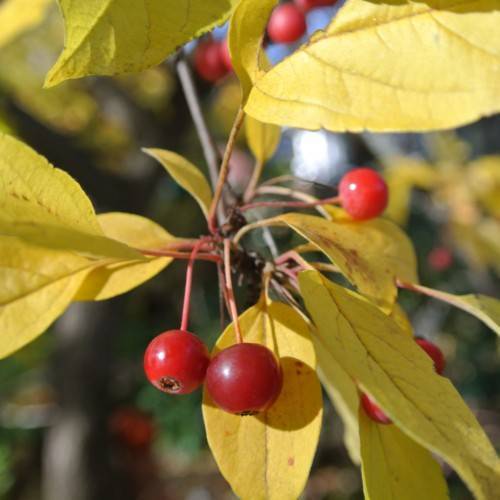
redbud crabapple
Malus zumi var. calocarpa
Cycle:
Perennial
Watering:
Average
Hardiness Zone:
4 - 8
Flowers:
Flowers In Spring
Sun:
Full sun
Fruits:
Fruits Ready In
Leaf:
Yes
Growth Rate:
Low
Maintenance:
Moderate
Drought Tolerant:
Yes
Care Level:
Moderate
watering
Redbud crabapple (Malus zumi var. calocarpa) should be watered once a week, or whenever the top inch of soil feels dry. When watering, it is best to soak the soil until the water starts to come out of the bottom of the pot, and then allow it to completely dry before watering it again. Ensure that the pot has good drainage so excess water can escape and the plant does not become waterlogged.
sunlight
Redbud crabapple trees need at least 6 hours of direct sunlight per day for optimal growth. In regions with hotter climates, it may be beneficial for redbud crabapple species to only receive about 5 hours of direct sunlight each day, especially during the peak summer months when temperatures could become extreme. While redbud crabapple trees can tolerate shade on occasion, consistent shade or lack of exposure to sunlight can delay growth and cause leaf yellowing.
pruning
Redbud crabapple should be pruned in late winter, just before new growth begins. It is best to prune trees like this 1 to remove dead, diseased, broken, and/or crossing limbs. Remove only small amounts of healthy wood and be sure to leave branches with significant size and structure. This will help maintain the overall tree shape and structure. When pruning, always make sure to prune at the branch collar (the swollen area of a branch where it connects to the trunk). Do not leave stumps or stubs as they can attract disease or pests.
